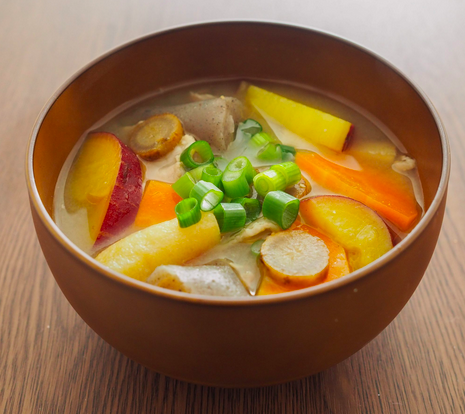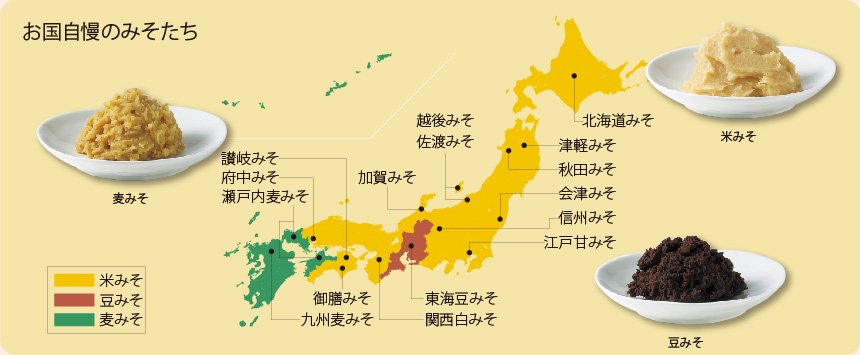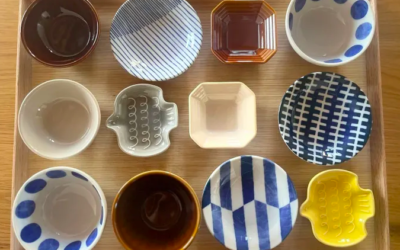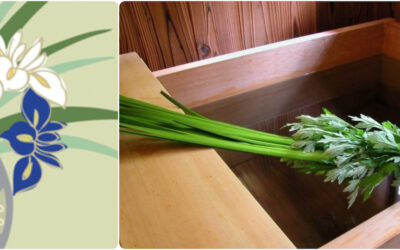
An Honorable Bowl of Soup
The Japanese have several words to describe their ubiquitous soup seasoned and enriched with miso. The prosaic miso shiru 味噌汁 is a generic word meaning “miso-thickened broth” while miso ji-daté 味噌仕立て is a functional, culinary term meaning “cooked with miso.”
Omiotsuké 御御御付け, however, conveys respect. It is written with three honorific calligraphy 御 (usually pronounced “go” but sometimes “o” or “mi”) plus 付ける “tsukeru ” (meaning “to attach or fasten”).

Regional Preferences Abound
There are hundreds if not thousands, of types of miso that the Japanese regularly enjoy. Most often the soybean mash is enriched with komé kōji, a cultured rice spore medium that enhances the fermentation process (the yellow areas of the map, above). Other miso pastes are enriched with cultured wheat or millet, or combinations of grain and beans (the green areas of the map, above). Still other miso pastes are made just with daizu (dried soybeans) (the brown area in the center of the map, above). The variety of raw materials and the length of fermentation time produce a wide range of flavors, from mild to pungent, and textures, from smooth to chunky, in the final product. Generally, miso is classified as either dark (aka miso, literally “red” miso) or light (shiro literally “white”) though there are medium shades (and flavors), too.
Blending or mixing different kinds of miso, what is known as awasé miso (combining) is quite common kitchen practice. Blending different kinds of miso allows you to customize the flavor, hue, and texture of the final mixture. There are no hard-and-fast rules regarding percentages, though most households will prefer saltier (often darker) miso soup in the hot weather and sweeter (often lighter colored) in the cold months.
Miso preferences for most Japanese are intertwined with regional identity, not unlike the wines and cheeses of Europe that are so inextricably linked to terroir. Those who grew up in Kyushu and the southwest provinces of Japan favor yeasty, caramel-colored, mugi (barley-enriched) miso.
On the main island of Honshu, those born in Nagoya are devotees of fudge-colored, pure bean Hatcho miso.
Natives of the Kansai region (Kyoto, Nara, Osaka, even in Kobe), however, are passionate about their pale, creamy-sweet Saikyo shiro miso.
Want to enrich your diet and expand your culinary repertoire? Add miso soup to your menu. Check out PROJECT Miso Soup
If you haven’t yet read my JANUARY 2024 newsletter about miso, check it out.




